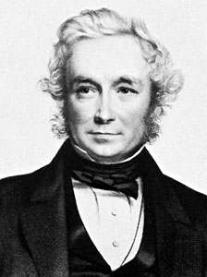So, to give you a taster, here is one of the boxes that had to be cut from the final edition, documenting Darwin's botantists, Henslow and Hooker.
 John Stevens Henslow (1796-1861) was Darwin’s teacher, travel agent and publicist—he taught Darwin botany, found a place for him on the Beagle, forwarded his specimens and published extracts from his letters. Thanks to Henslow, Darwin’s reputation was established by the time he returned from the Beagle.
John Stevens Henslow (1796-1861) was Darwin’s teacher, travel agent and publicist—he taught Darwin botany, found a place for him on the Beagle, forwarded his specimens and published extracts from his letters. Thanks to Henslow, Darwin’s reputation was established by the time he returned from the Beagle.
Joseph Dalton Hooker (1817-1911) graduated as a medic in 1839, then, like Darwin, started life as an adventurer. As assistant surgeon, he sailed on HMS Erebus on a four-year expedition to the Southern Oceans that included stops at numerous islands and visits to South America, Africa, Australia and New Zealand.

 John Stevens Henslow (1796-1861) was Darwin’s teacher, travel agent and publicist—he taught Darwin botany, found a place for him on the Beagle, forwarded his specimens and published extracts from his letters. Thanks to Henslow, Darwin’s reputation was established by the time he returned from the Beagle.
John Stevens Henslow (1796-1861) was Darwin’s teacher, travel agent and publicist—he taught Darwin botany, found a place for him on the Beagle, forwarded his specimens and published extracts from his letters. Thanks to Henslow, Darwin’s reputation was established by the time he returned from the Beagle. Henslow was first Professor of Mineralogy at Cambridge, then Professor of Botany. He played a key role in establishing the Cambridge University Botanic Garden. In the late 1830s, Henslow was appointed vicar in the Suffolk village of Hitcham. Here he established parish schools, clubs, shows, allotments, and excursions. His experiments on phosphate fertilizers led to the founding of local company Fisons.
But Henslow remained active on the national stage, coaching Queen Victoria’s children in botany and attending scientific meetings. He chaired the notorious 1860 meeting in Oxford where Wilberforce faced Huxley. Although Henslow never fully accepted Darwin’s ideas on evolution, the two men remained firm lifelong friends. After Henslow’s death in 1861, Darwin wrote: “I fully believe a better man never walked this earth.” Henslow is buried at his church in Hitcham, his grave decorated with wild flowers.
Further reading: Darwin's Mentor: John Stevens Henslow, 1796-1861 by S. M. Walters and E. A. Stow
Joseph Dalton Hooker (1817-1911) graduated as a medic in 1839, then, like Darwin, started life as an adventurer. As assistant surgeon, he sailed on HMS Erebus on a four-year expedition to the Southern Oceans that included stops at numerous islands and visits to South America, Africa, Australia and New Zealand.
Shortly after his return from the Antarctic, Hooker was asked by Darwin to help classify some plant specimens and so began an enduring friendship and collaboration. In later life, Hooker recalled their intellectual discussions "as iron sharpeneth iron" (a quote from the book of Proverbs).

After a few unsettled years in England, Hooker carried out a survey of northern India and the Himalayas in 1847-9. Following an unsanctioned border crossing from Sikkim to Tibet, he was arrested and imprisoned by the local Rajah, only to be released after a British threat of invasion.
On retuning to England, Hooker wrote several books, detailing his travel experiences and his discoveries in natural history. He married Henslow’s daughter Frances and subsequently (like Darwin) was devastated by the childhood death of a daughter. In 1865 he succeeded his father to become director of Kew Gardens, a role that drew him into fierce arguments with Darwin’s rival, Richard Owen. Hooker is buried next to his beloved Kew Gardens in the churchyard of St Anne’s Church.
3 comments:
How thoroughly fascinating! And to think that these two men are related - oh, the conversations they must of had! Thank you for sharing the profiles.
If you like dynastic fusions, it is also worth noting that the Huxley lineage and the Darwin iineage met when a great-grandson of Charles Darwin, George Pember Darwin married a great-granddaughter of Thomas Huxley, Angela Huxley in 1964!
Mark - that is really some fodder for ponder! Thanks!
Post a Comment